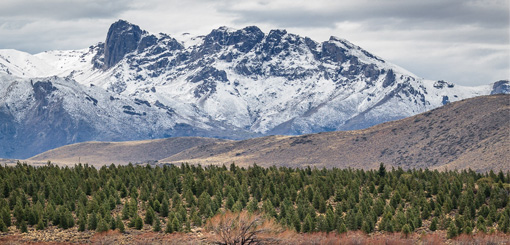Chubut, a Patagonian province located between parallels 42° and 46° south latitude, is perhaps the most representative of southern Argentina i n terms of landscape and the resilience of its inhabitants. According to the Secretariat of Tourism of that province, "at the western end the Andes rises, which does not exceed 2500 meters high and next to it a collection of glacial lakes that have given their idiosyncrasy to the region.
n terms of landscape and the resilience of its inhabitants. According to the Secretariat of Tourism of that province, "at the western end the Andes rises, which does not exceed 2500 meters high and next to it a collection of glacial lakes that have given their idiosyncrasy to the region.
The province of Chubut is located about 1,200 kilometers from the city of Buenos Aires. Although it is recognized as a region "with a difficult climate because it is necessary to tolerate the very strong winds that cross Chubut most of the days of the year and the dry atmosphere
At all times the passion and love for the land that pioneers put in founding towns can be traced here. In this region oil was found back in 1907, on the outskirts of the town of Comodoro Rivadavia, which also has a large number of sheep, which have made it one of the most important exporters of wool abroad.
In addition, "in recent years the unique event of the arrival of whales to Puerto Pirámides has generated one of the most overwhelming tourist attractions in the country. Thousands of Argentines and foreigners travel to this coastal area of Chubut every year, to live the exciting adventure of seeing whales and their calves, as well as penguins, sea lions and elephant seals".
The mountain range region also has its charms: national parks, ancient trees, glacier lakes, narrow gauge trains that run through the Patagonian steppe and paleontological remains that surprise scholars from around the world".
One of the most visited places in this area is Los Alerces National Park, a large protected area and UNESCO world heritage site that includes lakes Futalaufquen, Verde, Krüger, Rivadavia, Menéndez and the Arrayanes River.
The park was created to protect "the forests of lahuán or alerce, one of the oldest living trees on the planet, which are typical of the region, and became endangered. It also served to protect the huemul deer, typical of the region, which at one point and due to intensive hunting almost fell into extinction.
Podcast: Bajar
Suscribirse en ¿Qué es Nacional Podcasts?








